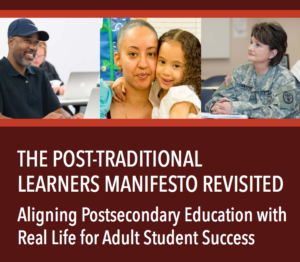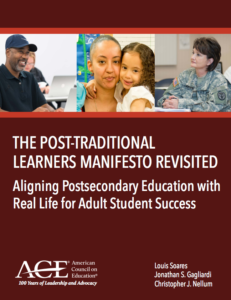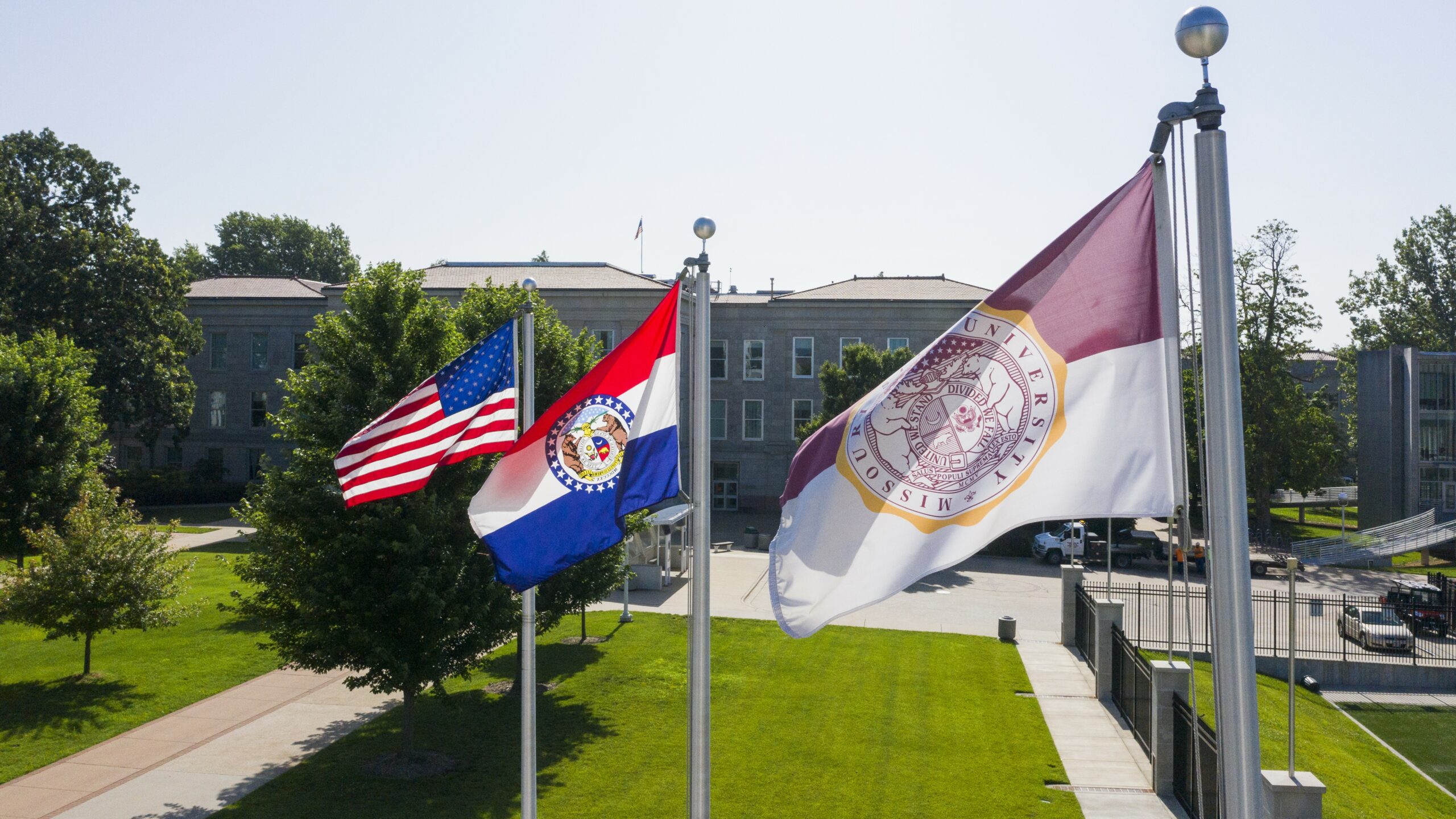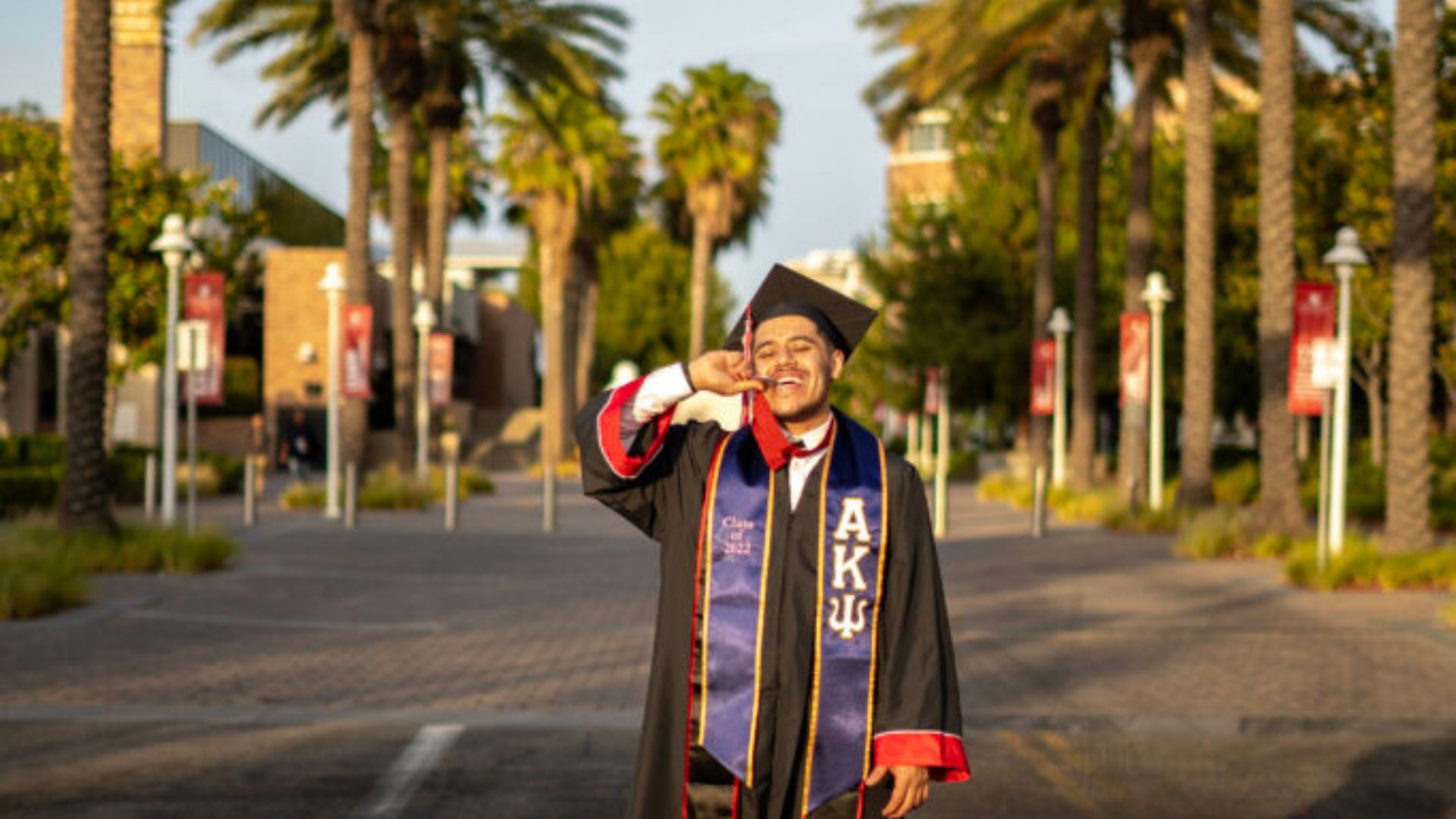If you hang around a college campus long enough, you’ll find that the traditional student isn’t some fresh-faced recent high school graduate. Odds are they look a little older, a little wiser and maybe a little frazzled from the real-world demands of adulthood.

That’s because nearly 60 percent of U.S. undergraduates are post-traditional learners, according to an American Council on Education (ACE) report released last December. This group can be labeled “nontraditional” or “21st-century students,” yet they have the same characteristics: older than the age of 24, racially diverse, financially independent and working full-time or connected to the U.S. military.
These students carry responsibilities with them as they make their way through higher education but can often fall short of the finish line.
The Post-traditional Learners Manifesto Revisited: Aligning Postsecondary Education with Real Life for Student Success examines how to support these learners through better data analysis, increased financial assistance and customizing coursework to fit their timetables. According to the report, millions of Americans could have their economic futures improve if policymakers and educators eased their path to a credential.
The ACE Center for Policy Research and Strategy’s (CPRS) Luis Soares and Jonathan Gagliardi analyzed data from the National Postsecondary Student Aid Study 2011-2012 found that 36 million Americans over the age of 25 have attempted college and that nearly 12 million of them have completed at least one year. These students sitting “on the doorstep” of degree completion may have run into roadblocks such as caring for a sick parent or providing for their families. The study’s authors said that helping them out could profoundly change our society.
“The benefits are manifold, and include higher tax revenues, greater civic engagement, and less reliance on public assistance,” Gagliardi and Soares wrote in an ACE blog post.
They report that Americans with an associate degree can earn up to $3,100 more in after-tax income compared to those with some college and no degree. It would add up to an additional $43.2 billion in generated tax revenue in one year if all of these students over 25 completed their associate degree, according to Revisited.
Beyond the economic impact, transforming higher education into a more accommodating place for post-traditional learners will help them prepare for the changing workforce. The World Economic Forum (WEF) reported that 1.4 million U.S. jobs are threatened by advances in automation and artificial intelligence within a decade. Without adequate reskilling opportunities, the WEF said that these workers will not be able to transition into new jobs.
RELATED STORY: To reach “stranded” working adults, California creates online-only community college
This creates an imperative for postsecondary to reform its model to serve lifelong learners and innovate new ideas appealing to a diverse range of backgrounds. The study highlighted competency-based education, where students earn credentials based on mastering skills instead of tests, and experiential learning, where real-life work opportunities become the classroom.
“Such an approach is particularly useful for adult post-traditional learners who are juggling a variety of life roles and responsibilities,” the study said.
WorkingNation has promoted the value of experiential learning through its Do Something Awesome mini-documentary videos on the College for Social Innovation and the Akamai Technical Academy. These success stories show how this model is working at the local level. But replicating this success has been difficult on a larger scale.
To improve post-secondary student outcomes on a national scale, the study suggested adjusting and increasing Pell Grant funding will ensure that low-income students can afford to finance their education. Other support can come from the Federal Work Study program, but the co-authors said that both are threatened by budget cuts.
Ultimately, it will come down to better data analysis to identify the specific needs of post-traditional learners. The study said that higher education institutions can make basic changes to their datasets and publicize their findings so post-traditional students can make more informed decisions about their future. The U.S. Department of Education recently announced that it is working to improve transparency in financial aid data reporting.
Improving the educational futures of post-secondary learners may require big national efforts and increased educational funding. At the student’s level, maybe all they need is more night courses, an on-site daycare while they attend school or a more portable credit system. Revisited offers a roadmap to identifying these issues, but it will be up to policymakers and educators to make these fundamental reforms.
To view the entire report: Click Here.
Join the Conversation: Share your ideas about the report on our Facebook page.












